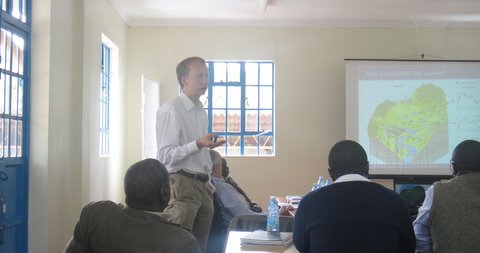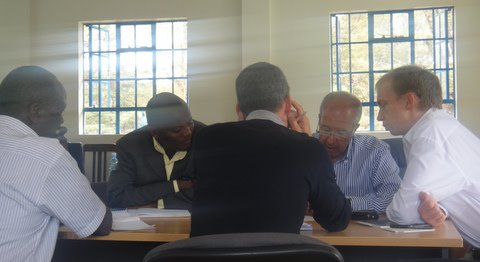A meeting was organized to present the final report of the Physiographical Baseline Survey for the Upper Tana Catchment Area in Kenya, carried out by a team of nearly twenty local and international experts during one year. The event was organized in the Tana headquarters of the national water authority (WRMA), in Embu, the 9th of August.

All key stakeholders acting in the basin were invited and a large group of people attended and participated actively in the discussions on the results and following-up actions. The speakers were Panos Antonaropoulos from Z&A (Greece) and Johannes Hunink from FutureWater. The meeting was hosted by the regional manager of WRMA Boniface Mwaniki.

The survey included bathymetric surveys of the key reservoirs in the basin, an extensive monitoring program with point measurements of suspended sediment loads, evaluation of the current monitoring networks (streamflow gauges and weather stations), and a basin-scale erosion assessment through hydrological modeling. FutureWater was responsible for the modeling assessment, using the data measured during the monitoring campaign, and carried out the scenario analysis.

Special attention was paid in the scenario analysis and during the presentation on the involvement of the local water resources user associations. These currently established in about half of the cropped land. The measurements and model confirmed that erosion from cultivated areas contributes significantly to reservoir sedimentation. Especially poorly managed or abandoned coffee areas and subsistence crops are a major source of sediments, so changing farmers’ practices is relatively effective. The effectiveness in reducing reservoir sedimentation depends on the level of adoption of the enhanced farmers´ practices. This relation was assessed in the erosion model and presented. The results were positively received and discussed by the client and the stakeholders during the meeting.
